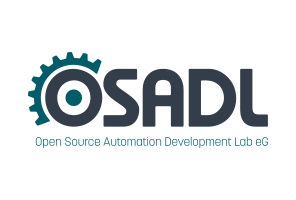Dates and Events:
|
OSADL Articles:
2023-11-12 12:00
Open Source License Obligations Checklists even better nowImport the checklists to other tools, create context diffs and merged lists
2022-07-11 12:00
Call for participation in phase #4 of Open Source OPC UA open62541 support projectLetter of Intent fulfills wish list from recent survey
2022-01-13 12:00
Phase #3 of OSADL project on OPC UA PubSub over TSN successfully completedAnother important milestone on the way to interoperable Open Source real-time Ethernet has been reached
2021-02-09 12:00
Open Source OPC UA PubSub over TSN project phase #3 launchedLetter of Intent with call for participation is now available |
Real Time Linux Workshops
1999 - 2000 - 2001 - 2002 - 2003 - 2004 - 2005 - 2006 - 2007 - 2008 - 2009 - 2010 - 2011 - 2012 - 2013 - 2014 - 2015
14th Real Time Linux Workshop, October 18 to 20, 2012 at the Department of Computer Science, University of North Carolina at Chapel Hill
Announcement - Call for papers (ASCII) - Hotels - Directions - Agenda - Paper Abstracts - Presentations - Registration - Abstract Submission - Sponsors - Gallery
Hijack^{COS}_{Linux}: Practical, Predictable, and Efficient OS Co-Location using Linux
Gabriel Parmer, The George Washington University
Qi Wang, The George Washington University
Jiguo Song, The George Washington University
Tareque Hossain, The George Washington University
Yang Yang Wu, The George Washington University
Three of Linux's greatest assets, especially in embedded systems, are its extensive corpus of device drivers, its hardware compatibility layer that spans many architectures and platforms, and the broad spectrum of applications ported to it. This paper details an OS design that enables the co-location of both the Linux kernel, and other real-time operating system kernels on the same processor. In executing other operating systems in this manner, they receive the advantage of Linux's assets, while also enabling the benefits of running other OSes with alternate structures and goals.
This paper specifically focuses on the design and implementation of the compatibility layer with Linux that enables the co-located OS to selectively use specific Linux functionalities. The technique does not require modifications to the Linux kernel, and supports co-located kernels that provide user-level execution. An emphasis is on maintaining native performance and predictability of all co-located OSes. We detail the use of this technique to co-locate with Linux the Composite component-based OS – a real-time OS with a very different design. In doing so, we discuss the points of friction where Composite is adapted to ensure system correctness, or to avoid sacrifices in performance or predictability. We provide an evaluation of the system with specific emphasis on different means for the co-located OS to access the device drivers and applications of Linux.




